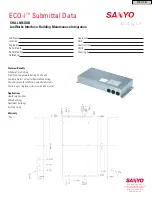
205
•
Downlink traffic
—Traffic transmitted from the service provider network to the customer network.
•
Network-side port
—A port connected to or closer to the service provider network.
•
Customer-side port
—A port connected to or closer to the customer network.
•
Uplink policy
—A QoS policy that defines VLAN mapping rules for uplink traffic.
•
Downlink policy
—A QoS policy that defines VLAN mapping rules for downlink traffic.
•
Customer VLANs (CVLANs)
—VLANs assigned for customers.
•
Service provider VLANs (SVLANs)
—VLANs assigned for transmitting traffic across the service
provider network.
For more information about QoS policies, see
ACL and QoS Configuration Guide
.
VLAN mapping implementations
This section describes how VLAN mapping is implemented on your device.
One-to-one VLAN mapping
Implement one-to-one VLAN mapping on the customer-side port through the following configurations, as
shown in
•
Apply an uplink policy to the incoming traffic, mapping each CVLAN ID to a unique SVLAN ID.
When a packet arrives, the switch replaces its CVLAN ID with the matching SVLAN ID.
•
Apply a downlink policy to the outgoing traffic, mapping each SVLAN ID back to its corresponding
CVLAN ID. When forwarding a packet out of the port, the switch replaces its SVLAN ID with the
matching CVLAN ID.
Figure 71
One-to-one VLAN mapping implementation
Many-to-one VLAN mapping
Implement many-to-one VLAN mapping through the following configurations, as shown in
•
Apply an uplink policy to the incoming traffic on the customer-side port to map different CVLAN IDs
to one SVLAN ID. When a packet arrives, the switch replaces its CVLAN tag with the matching
SVLAN tag.
•
Configure the network-side port as a DHCP snooping trusted port. For downlink traffic, the switch
looks through the DHCP snooping table, and replaces the SVLAN ID with the CVLAN ID found in
the table.
















































